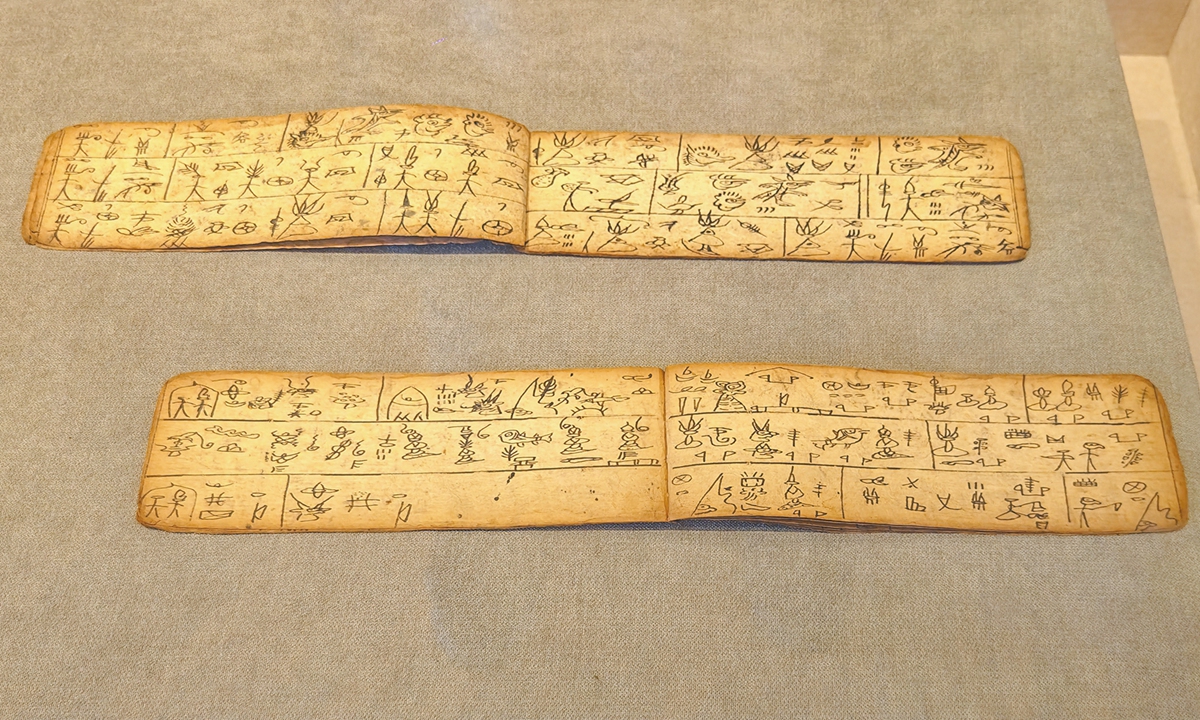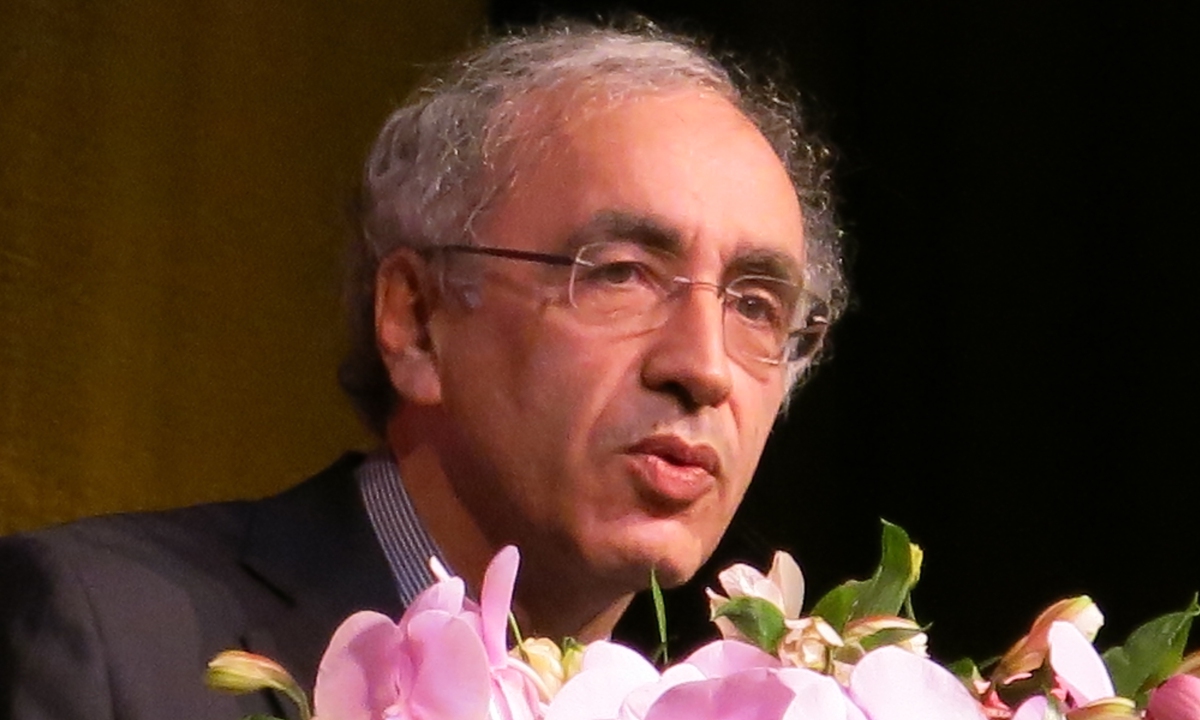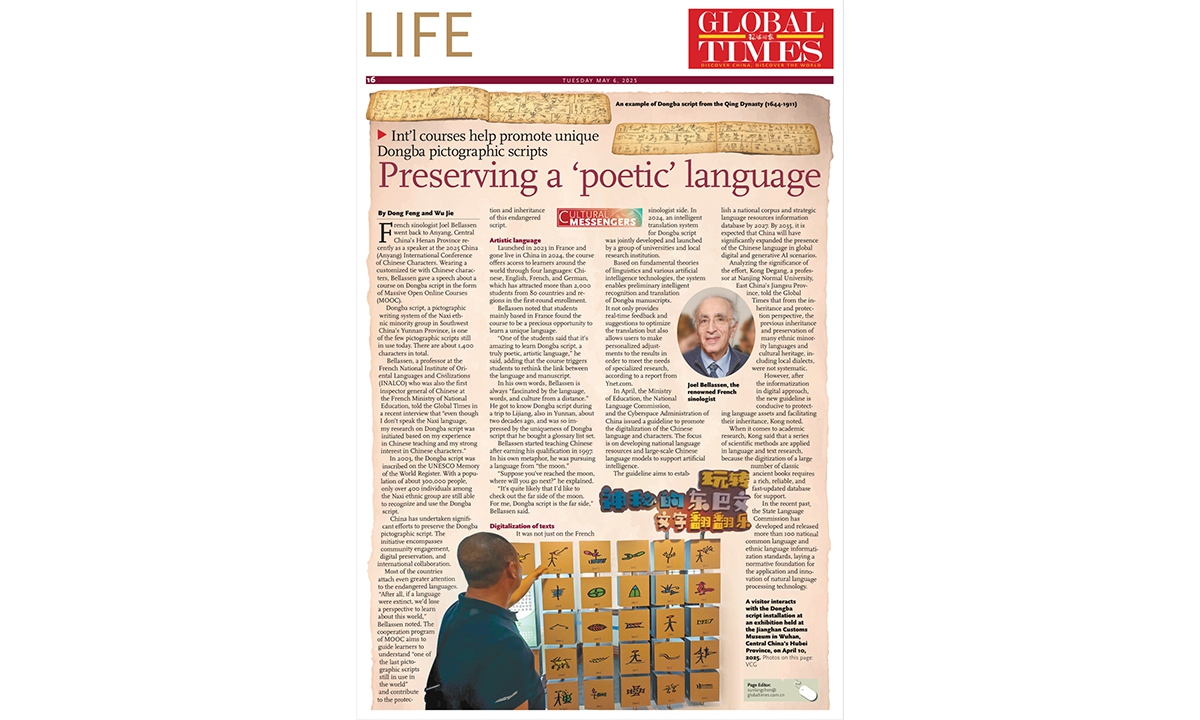ARTS / CULTURE & LEISURE
Int'l courses help promote unique Dongba pictographic scripts

An example of Dongba script from the Qing Dynasty (1644-1911) Photos: VCG
French sinologist Joel Bellassen went back to Anyang, Central China's Henan Province recently as a speaker at the 2025 China (Anyang) International Conference of Chinese Characters. Wearing a customized tie with Chinese characters, Bellassen gave a speech about a course on Dongba script in the form of Massive Open Online Courses (MOOC).Dongba script, a pictographic writing system of the Naxi ethnic minority group in Southwest China's Yunnan Province, is one of the few pictographic scripts still in use today. There are about 1,400 characters in total.

French sinologist Joel Bellassen Photo: Courtesy of Joel Bellassen
Bellassen, a professor at the French National Institute of Oriental Languages and Civilizations (INALCO) who was also the first inspector general of Chinese at the French Ministry of National Education, told the Global Times in a recent interview that "even though I don't speak the Naxi language, my research on Dongba script was initiated based on my experience in Chinese teaching and my strong interest in Chinese characters."In 2003, the Dongba script was inscribed on the UNESCO Memory of the World Register. With a population of about 300,000 people, only over 400 individuals among the Naxi ethnic group are still able to recognize and use the Dongba script.
China has undertaken significant efforts to preserve the Dongba pictographic script. The initiative encompasses community engagement, digital preservation, and international collaboration.
Most of the countries attach even greater attention to the endangered languages. "After all, if a language were extinct, we'd lose a perspective to learn about this world," Bellassen noted. The cooperation program of MOOC aims to guide learners to understand "one of the last pictographic scripts still in use in the world" and contribute to the protection and inheritance of this endangered script.
Artistic language
Launched in 2023 in France and gone live in China in 2024, the course offers access to learners around the world through four languages: Chinese, English, French, and German, which has attracted more than 2,000 students from 80 countries and regions in the first-round enrollment.
Bellassen noted that students mainly based in France found the course to be a precious opportunity to learn a unique language.
"One of the students said that it's amazing to learn Dongba script, a truly poetic, artistic language," he said, adding that the course triggers students to rethink the link between the language and manuscript.
In his own words, Bellassen is always "fascinated by the language, words, and culture from a distance." He got to know Dongba script during a trip to Lijiang, also in Yunnan, about two decades ago, and was so impressed by the uniqueness of Dongba script that he bought a glossary list set.
Bellassen started teaching Chinese after earning his qualification in 1997. In his own metaphor, he was pursuing a language from "the moon."
"Suppose you've reached the moon, where will you go next?" he explained.
"It's quite likely that I'd like to check out the far side of the moon. For me, Dongba script is the far side," Bellassen said.

A visitor interacts with the Dongba script installation at an exhibition held at the Jianghan Customs Museum in Wuhan, Central China's Hubei Province, on April 10, 2025.
Digitalization of textsIt was not just on the French sinologist side. In 2024, an intelligent translation system for Dongba script was jointly developed and launched by a group of universities and local research institution.
Based on fundamental theories of linguistics and various artificial intelligence technologies, the system enables preliminary intelligent recognition and translation of Dongba manuscripts. It not only provides real-time feedback and suggestions to optimize the translation but also allows users to make personalized adjustments to the results in order to meet the needs of specialized research, according to a report from Ynet.com.
In April, the Ministry of Education, the National Language Commission, and the Cyberspace Administration of China issued a guideline to promote the digitalization of the Chinese language and characters. The focus is on developing national language resources and large-scale Chinese language models to support artificial intelligence.
The guideline aims to establish a national corpus and strategic language resources information database by 2027. By 2035, it is expected that China will have significantly expanded the presence of the Chinese language in global digital and generative AI scenarios.
Analyzing the significance of the effort, Kong Degang, a professor at Nanjing Normal University, East China's Jiangsu Province, told the Global Times that from the inheritance and protection perspective, the previous inheritance and preservation of many ethnic minority languages and cultural heritage, including local dialects, were not systematic.
However, after the informatization in digital approach, the new guideline is conducive to protecting language assets and facilitating their inheritance, Kong noted.
When it comes to academic research, Kong said that a series of scientific methods are applied in language and text research, because the digitization of a large number of classic ancient books requires a rich, reliable, and fast-updated database for support.
In the recent past, the State Language Commission has developed and released more than 100 national common language and ethnic language informatization standards, laying a normative foundation for the application and innovation of natural language processing technology.




